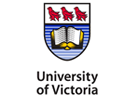July 19th - 23rd, 2007
Mandela unveils 'council of elders'
Nelson Mandela has marked his 89th birthday by forming a "council of elders" dedicated to finding new ways to resolve some of the world's longest-running crises. The former South African president launched his fellow elder statesmen on a new venture to foster peace, reduce conflict and despair during a birthday celebration on Wednesday. Among them are Kofi Annan, the former UN secretary-general, Jimmy Carter, the former US president and Desmond Tutu, the retired South African archbishop. Mandela said he hoped the new humanitarian alliance of Nobel peace laureates, politicians and development experts could make a difference. The group called The Elders was an idea of British entrepreneur Richard Branson and musician Peter Gabriel, both of whom were present at the launch.
The stream of conscientiousness
Through MBAs Without Borders, young people add social awareness with international flavour to their résumés, Roma Luciw writes
When Blake Dinkin devised an eco-friendly, inexpensive way for the impoverished Rwandan Batwa to fire up their pottery kilns, he says he was just putting his business skills to good use. "This project helps people see that they are not just beggars and labourers but are creating these beautiful works of art that are being sold in Greece and Italy. In the handicraft field, they are a success story," he said. Mr. Dinkin, who is back in Toronto consulting for a chain of interactive children's fitness facilities, appreciates his experience in Rwanda. "I think companies want to see that you have field experience in a place like that. Certainly in the not-for-profit sector, it will give me more credibility." Most people who finish MBA programs know how to tackle financial accounting, business statistics, spreadsheets and case studies. Often they aspire to move on to well-paid positions with large prestigious corporations. But not always. A small but growing number of MBA grads want to merge their business expertise with social and environmental objectives, such as alleviating poverty.
Sea how good this lamb tastes?
You could call it "meroir." Quebec's latest twist on "terroir" unites the briny grasses of the St. Lawrence with the province's tenderly raised lamb. On the remote peninsula of the Gaspé, a co-operative of five sheep farmers has formed to produce seaweed-fed meat. And in spite of small quantities and a premium price, chefs in the area and in Montreal's hottest restaurants are gobbling it up. "The liver is something special to taste," says Quebec's renowned food journalist Françoise Keller. Over the ages, salty diets have made for superlative lamb. Not to be confused with the traditional lamb "pré-salé" or "meadow," which grazes along the saline grasses lining the shores of Normandy and Brittany, seaweed-fed lamb is a delicacy on the remote shores of the Orkney and Shetland Islands. "In North America, I believe we are the first," says sheep farmer Manon Lelièvre, who represents the newly formed co-operative called L'Agneau de la Gaspesie nourri aux algues.
Teeple Architects to design new housing co-operative in Toronto
Teeple Architects is designing a new housing co-operative in Toronto, the first to be built in the city in several years. Located at the corner of Richmond Street and Church Street, this 12-storey building seeks to provide an alternative to the majority of recent glass tower condominium projects, and aims to set an example for urban infill and sustainable design goals. The 85-unit co-operative will be primarily formed by tenants requiring relocation due to the Regent Park regeneration project nearby, but will also serve those employed in the hospitality field, as the ground floor consists of a training kitchen and restaurant, as well as several classroom areas. The units range from one-bedroom to four-bedroom with two-storey units on the second and third floors. Many units have private terraces and many of the public corridors are naturally lit.
Argentina: where jobless run factories
On March 19, 2003, we were on the roof of the Zanón ceramic tile factory, filming an interview with Cepillo. He was showing us how the workers fended off eviction by armed police, defending their democratic workplace with slingshots and the little ceramic balls normally used to pound the Patagonian clay into raw material for tiles. His aim was impressive. It was the day the bombs started falling on Baghdad. As journalists, we had to ask ourselves what we were doing there. What possible relevance could there be in this one factory at the southernmost tip of our continent, with its band of radical workers and its David and Goliath narrative, when bunker-busting apocalypse was descending on Iraq? But we, like so many others, had been drawn to Argentina to witness firsthand an explosion of activism in the wake of its 2001 crisis—a host of dynamic new social movements that were not only advancing a bitter critique of the economic model that had destroyed their country, but were busily building local alternatives in the rubble.


 The Social Economy Student Network
The Social Economy Student Network


